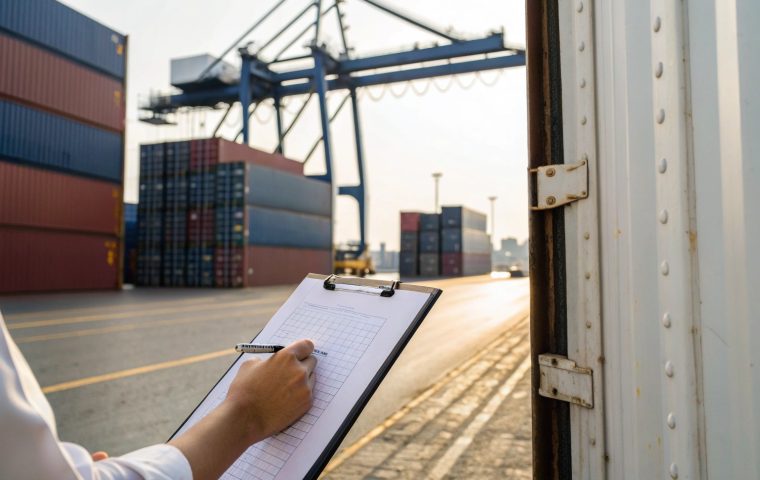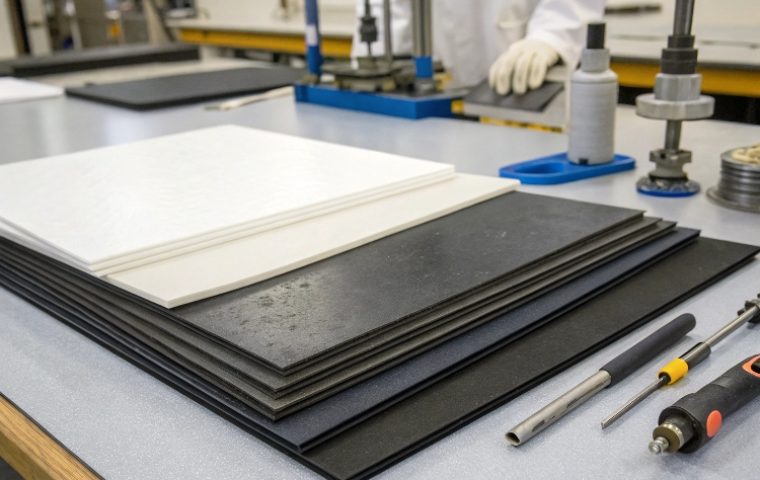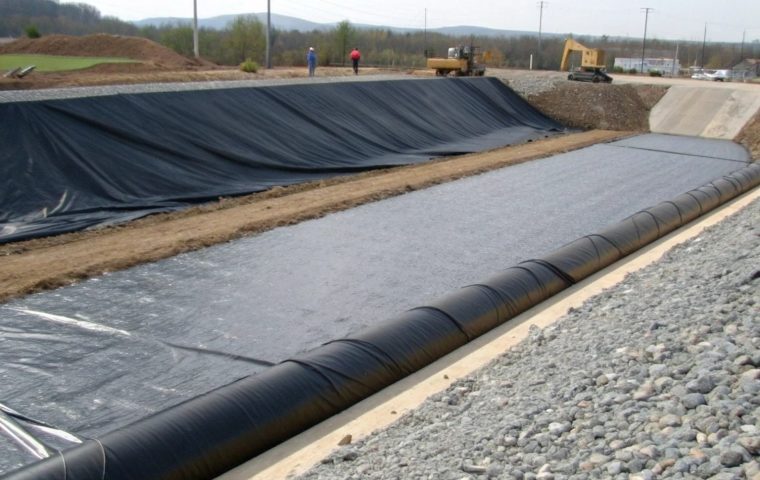Choosing a geomembrane based on process seems technical, but a wrong choice means installation problems and poor performance. Understand the difference to ensure you specify the right material.
The main difference lies in how the sheet is formed. Blown film extrusion inflates molten polymer into a "bubble," creating a stiff sheet with balanced strength. Flat die extrusion casts it onto rollers, producing a more flexible sheet with superior thickness control.
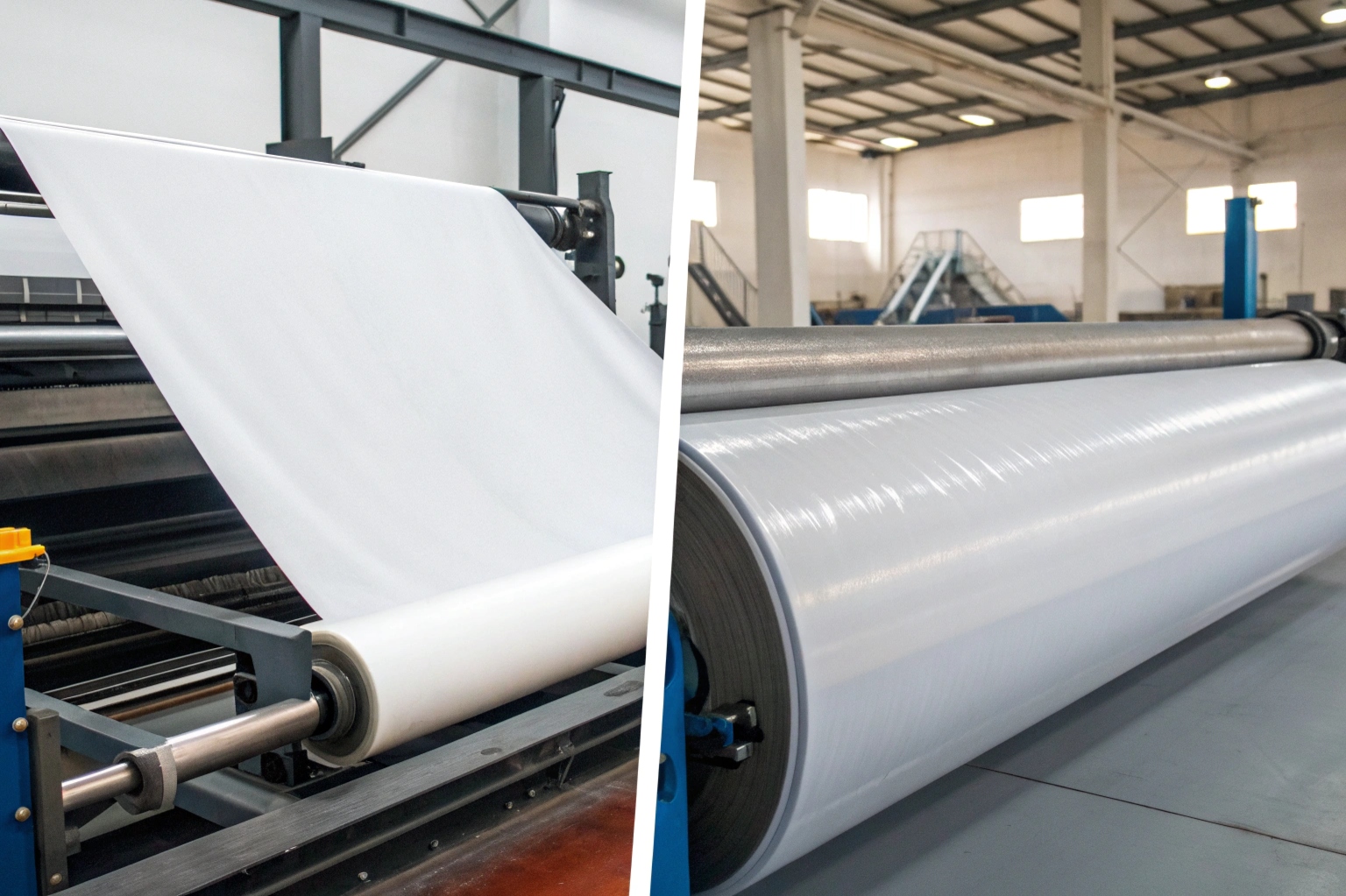
The manufacturing method isn't just a factory detail; it fundamentally defines the geomembrane's physical properties and how it will behave during installation and over its service life. For importers and project managers, knowing the difference is key to avoiding costly specification errors and ensuring long-term containment success. Let's break down exactly how these two dominant processes compare and what it means for your next project.
What Are the Core Process Differences Between Blown Film and Flat Die Extrusion?
It's hard to visualize how millions of plastic pellets become a liner. Without this context, you can't grasp why the final products perform so differently in the field.
Blown film extrusion melts polymer into a circular die, inflates it into a large bubble, then collapses it into a sheet. Flat die (or cast) extrusion pushes the melt through a wide, flat die directly onto chilled rollers to form the sheet.
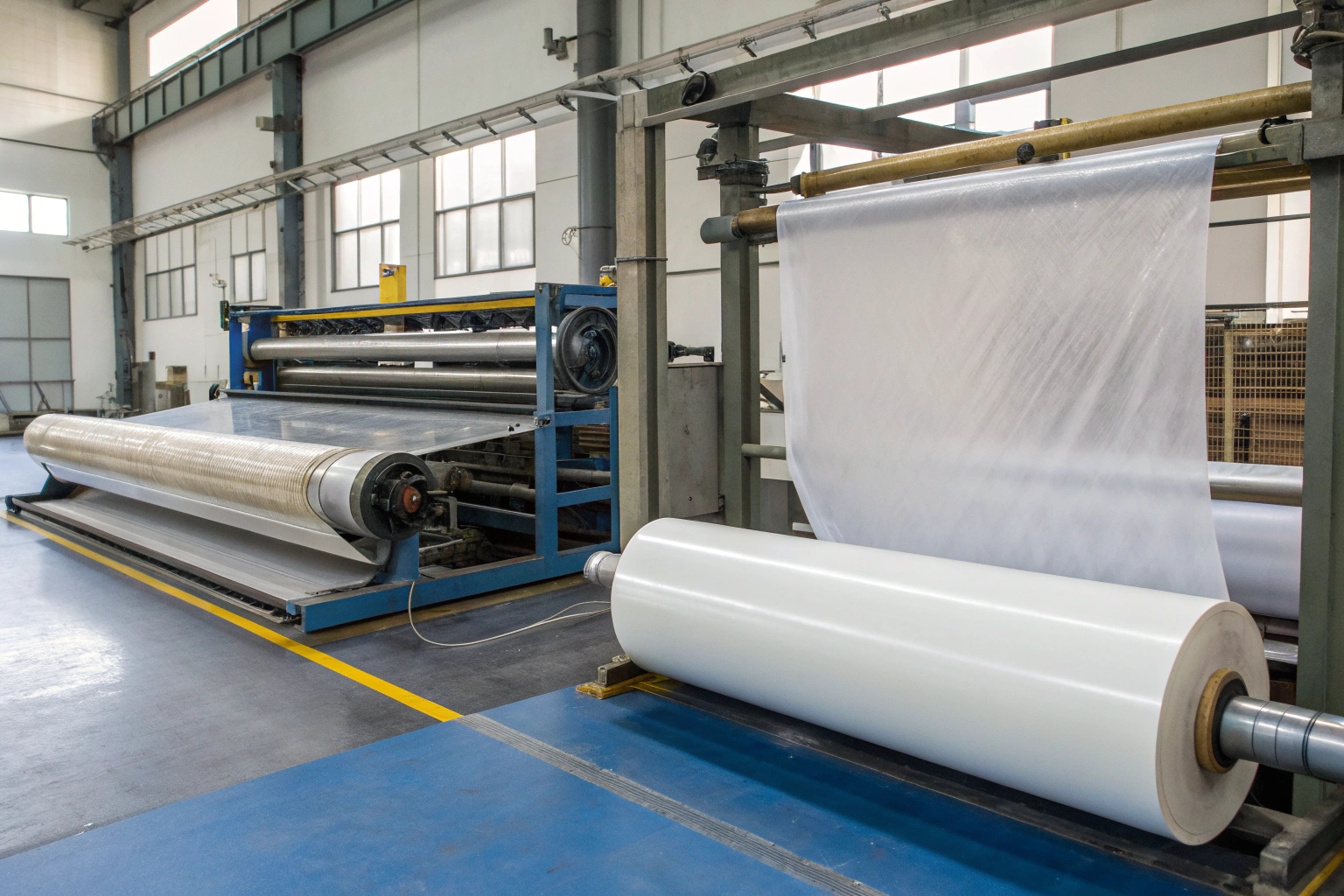
A Deeper Look at the Mechanics
The two methods create fundamentally different molecular structures in the final product. The blown film process stretches the material in two directions (machine and transverse) as the bubble expands, inducing biaxial orientation and higher crystallinity due to slower, air-based cooling. This accounts for over 80% of global geomembrane production due to its efficiency in making wide rolls.
In contrast, the flat die process involves minimal orientation as the molten sheet is rapidly cooled on large chill rolls. This quick cooling results in a more amorphous, less crystalline structure. The process is simpler mechanically but offers exceptional control over the final product's physical dimensions.
| Feature | Blown Film Extrusion | Flat Die (Cast) Extrusion |
|---|---|---|
| Principle | Molten polymer "bubble" is inflated | Molten polymer sheet is cooled on rollers |
| Cooling | Slower (air-cooled) | Faster (contact with chill rolls) |
| Orientation | Biaxial (two-direction strength) | Minimal (mostly machine direction) |
| Crystallinity | Higher | Lower |
How Do Manufacturing Processes Impact Geomembrane Quality, Thickness, and Strength?
Inconsistent geomembrane quality can compromise your entire project. Weak spots or variable thickness lead to difficult welding, leaks, and costly repairs that undermine the liner's purpose.
Flat die extrusion provides superior thickness control, often within a ±3% tolerance, for consistent quality and welding. Blown film provides balanced biaxial strength but has a wider thickness tolerance (up to ±10%), which can impact stress distribution and weld integrity.
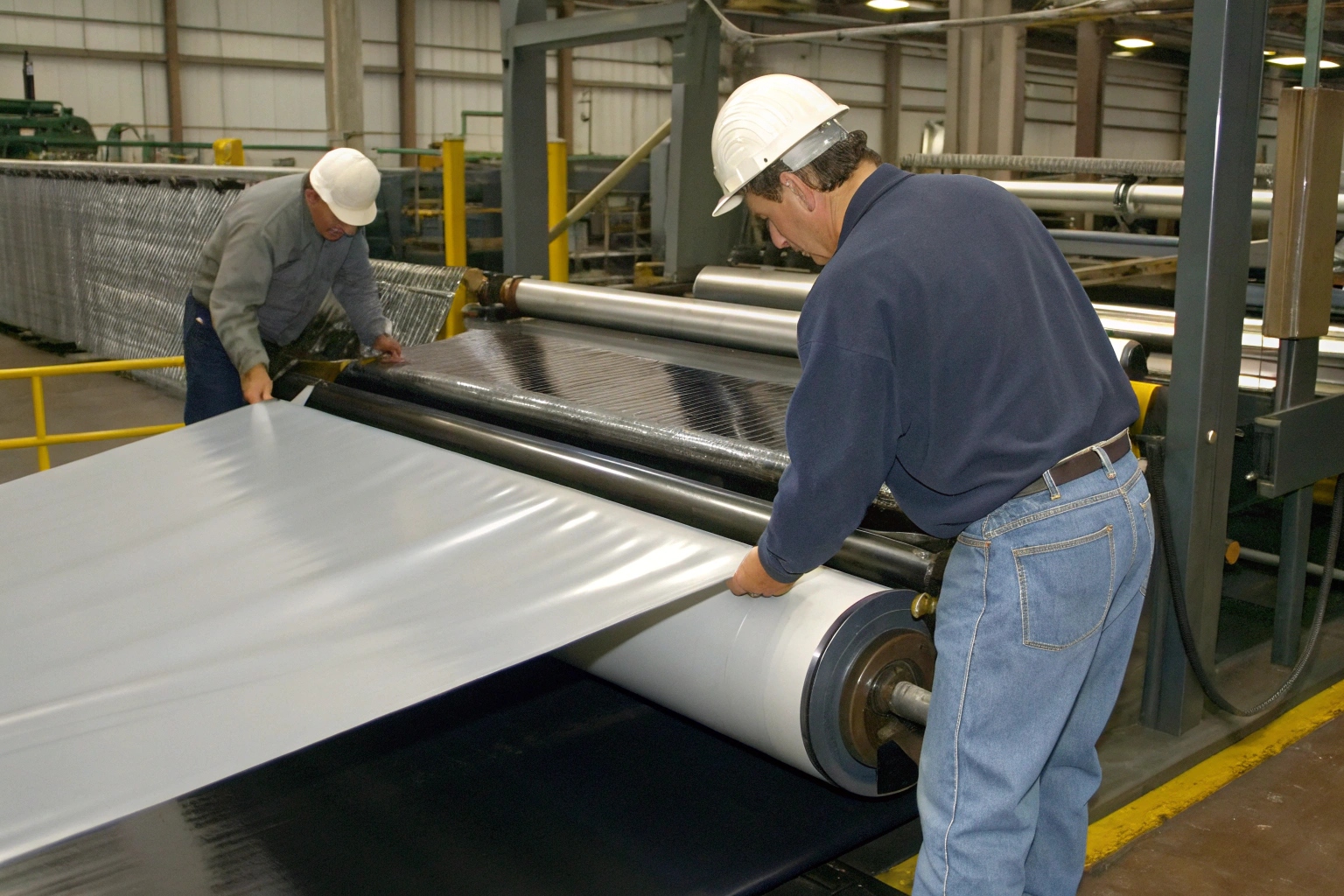
Breaking Down the Performance Trade-offs
The impact of the manufacturing process extends directly to field performance. A geomembrane produced via the blown film method tends to be stiffer and more brittle due to its higher density and crystallinity. While it offers good, balanced tensile strength, its narrow melting window can make it more challenging to weld, especially in colder weather.
Conversely, a flat die geomembrane is more flexible, ductile, and has better elongation properties. This softness makes it easier to handle and weld in variable field conditions and allows it to better conform to subgrade irregularities or accommodate settlement without placing excessive stress on the seams.
| Property | Blown Film Geomembrane | Flat Die Geomembrane |
|---|---|---|
| Thickness Uniformity | Less precise (±10% tolerance is common) | Highly precise (±3% tolerance achievable) |
| Flexibility / Ductility | Stiffer, more brittle | Softer, more ductile |
| Weldability | More challenging (narrower melting window) | Easier (wider melting window, more forgiving) |
| Stress Crack Resistance | Generally lower due to higher crystallinity | Generally higher due to amorphous structure |
Blown Film vs. Flat Die: Which Method Is Better for HDPE and LLDPE Geomembranes?
HDPE and LLDPE resins have different inherent properties. Choosing an incompatible manufacturing process can negate the polymer's advantages, leading to poor performance and unexpected failures.
Both methods work for HDPE and LLDPE. Blown film is common for creating stiff, high-strength HDPE. Flat die extrusion yields a more flexible HDPE, which is often better for installation and managing thermal stress, while enhancing LLDPE's natural flexibility.
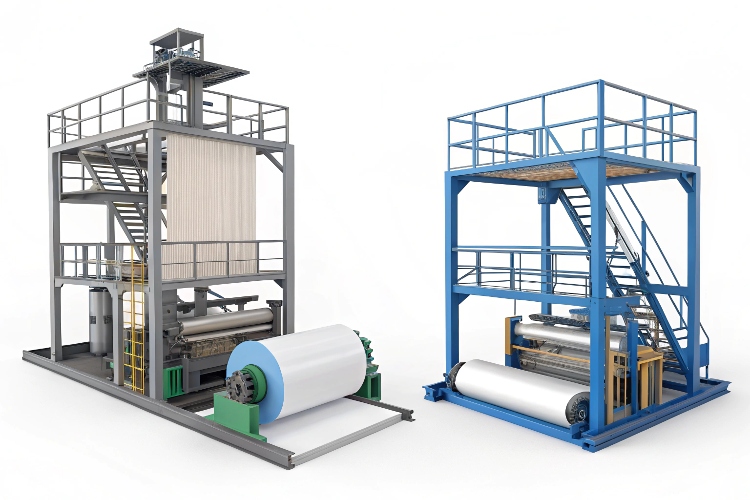
Matching Polymer to Process
For High-Density Polyethylene (HDPE), the choice depends on the desired final property.
- Blown Film HDPE: The slower cooling rate increases crystallinity, resulting in a liner with high density (>0.950 g/cm³), stiffness, and strength. This is excellent for applications needing high chemical resistance and durability on a stable subgrade, like landfills or reservoirs.
- Flat Die HDPE: Rapid cooling creates a less crystalline, more flexible sheet. This makes it a superior choice for applications where the liner must conform to uneven surfaces or endure thermal expansion and contraction cycles without excessive stress.
For Linear Low-Density Polyethylene (LLDPE), which is naturally more flexible than HDPE, flat die extrusion can further enhance its softness and elongation, making it ideal for applications requiring extreme flexibility like tank liners or heap leach pads. However, the final choice always comes down to the project's specific engineering demands, not just the polymer type.
How Do I Choose the Right Geomembrane Based on Its Manufacturing Process?
You understand the technical details, but how do you make the right purchasing decision? A wrong choice means overspending on precision you don't need or risking project failure by cutting corners.
Choose flat die geomembranes for projects needing high flexibility, precise thickness, and easier welding (e.g., steep slopes, irregular subgrades). Blown film is a cost-effective choice for large, flat areas where balanced strength and cost are primary drivers.
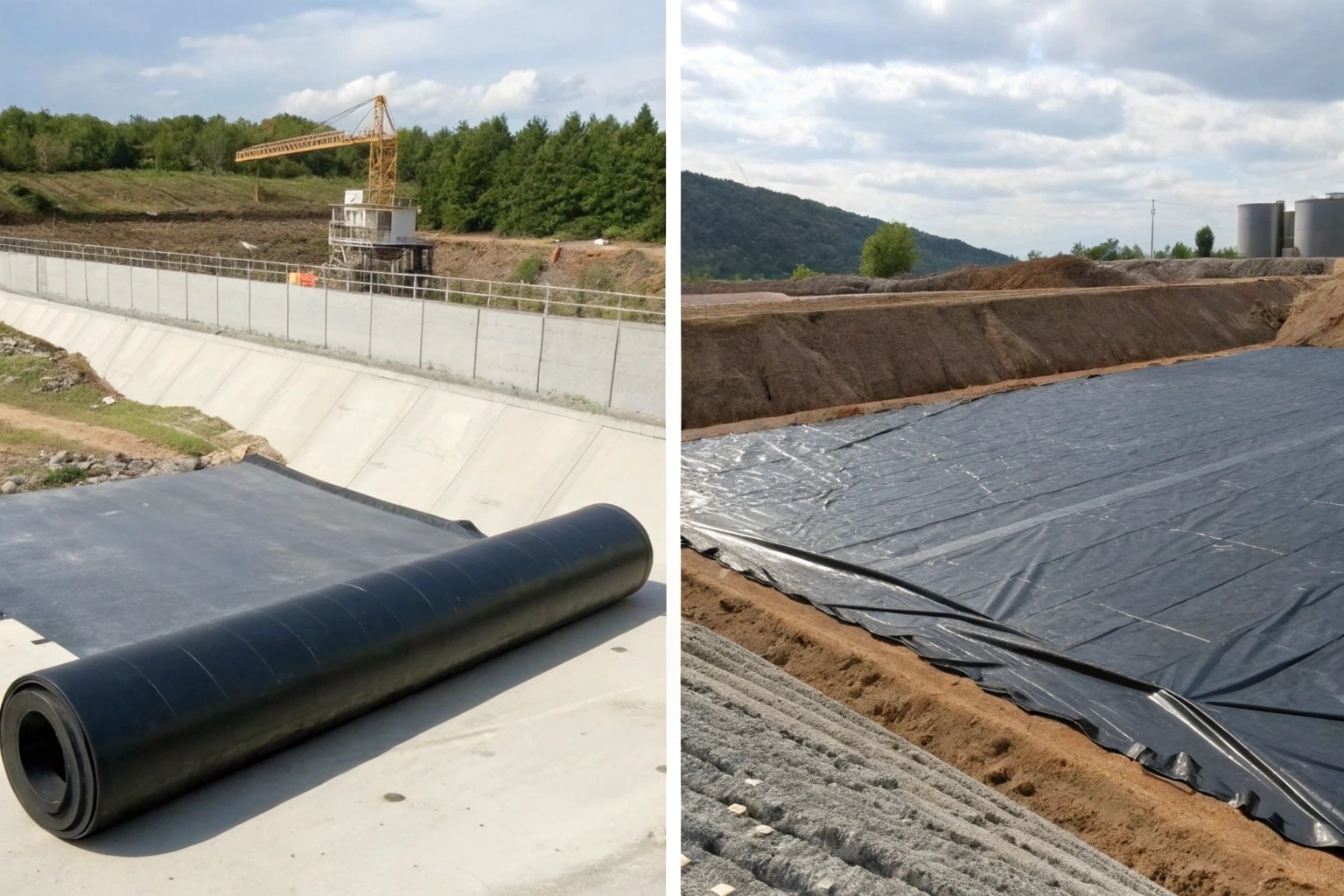
Your Decision Checklist
When specifying or importing geomembranes, ask the supplier which manufacturing method was used and match it to your project. The resin quality (Stress Crack Resistance, Oxidative Induction Time) is equally critical, but the process provides a clear performance baseline.
Use this simple guide for your decision:
Specify a Flat Die (Cast) Geomembrane When:
- The subgrade is uneven or settlement is expected.
- Flexibility and superior elongation are critical for performance.
- The project involves complex shapes, details, or steep slopes.
- Weld quality and installation ease are top priorities.
Consider a Blown Film Geomembrane When:
- The application covers a large, flat, and stable area.
- The project budget is a primary consideration for a high-volume order.
- Balanced strength in both directions is sufficient for the containment design.
- You have a rigorous on-site quality control program for welding.
Conclusion
Choosing between blown film and flat die depends on your project's needs for flexibility, thickness control, and cost. Neither is universally superior; the right choice aligns with engineering requirements.

